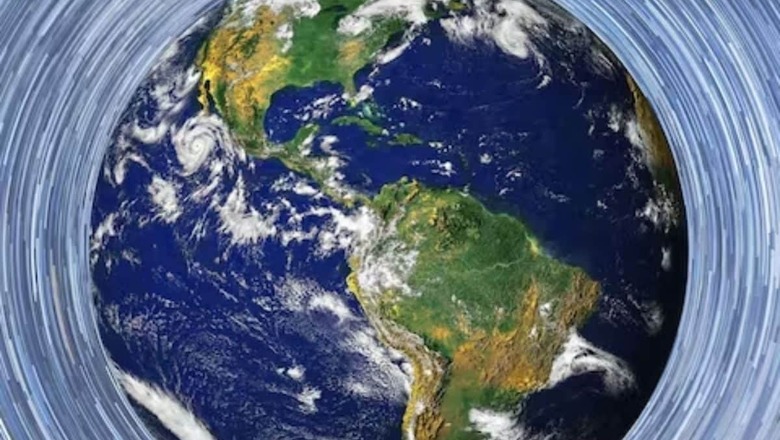
views
You must have been taught that the Earth constantly rotates in its axis, while revolving around the sun at the same time. It spins on its axis once every 24-hour. As far as the speed of the Earth is concerned, at its equator, it is about 1,000 miles per hour (1,600 km per hour). This day-night spin takes you along with it under the sun and stars every day of your life. Interestingly, despite this constant movement, you don’t feel the Earth spinning, unlike the earthquake tremors that shake you to the core. Let’s understand the reason why we feel earthquakes, but not the Earth’s spinning. The primary reason is that we and everything around us, including oceans and atmosphere, are spinning along with the Earth. Since the spinning is at the same constant speed, we do not feel any movement. If the Earth changes its speed, you will feel the movement.
The constant spin of the Earth made it a little difficult for our ancestors to know about the true nature of the cosmos. While they were successful in discovering that the stars, the sun, and the moon, all appeared to move above the Earth, it was far from imagination that the Earth was spinning all this while. They went with the logic and interpreted that Earth was stationary and “the heavens” moved above us. It took them years to discover that the earth is not stationary and is constantly rotating and moving around the sun as well.
Simply put, people do not feel Earth spin on its axis because its movement is steady and moves at a constant rate in orbit around the sun. Additionally, it is carrying us as passengers due to which we do not experience any movement. On the other hand, an earthquake is the result of built-up tension between the tectonic plates. It causes more or less violent accelerations which leads to vibrations that can destroy houses and bridges. There is no similarity between earthquakes and the spinning of the Earth.




















Comments
0 comment